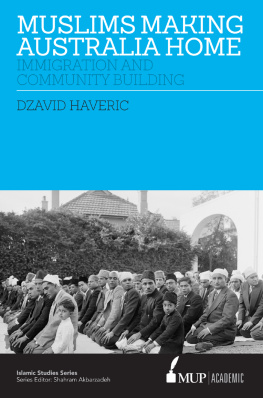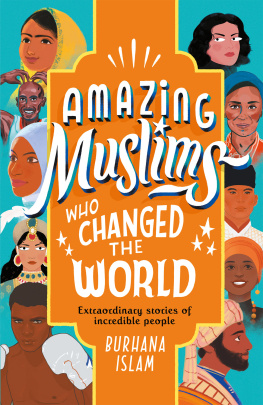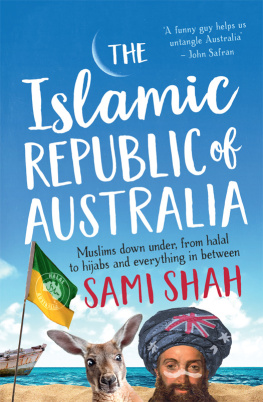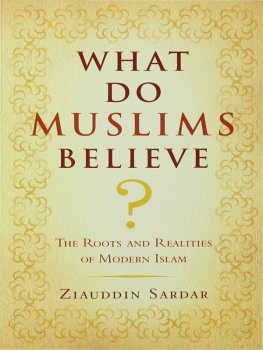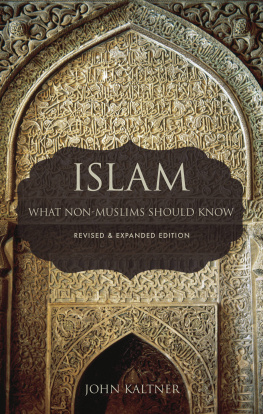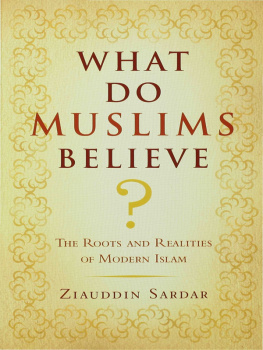In this book, Dr Ali provides an intelligent and compelling sociological narrative of the nature of Islam and the cultural character of Muslims in Australia. In doing so, he examines key topics under broad headings of settlement, integration, sharia, education and terrorism and looks at how these phenomena operate in the broader structure of Australian society. His deep understanding of the Australian Muslim community, coupled with the skills of an astute academic, makes this book accessible to all Australiansacademics and the general public alike. It is a must-read for anyone wanting a concise, clear and articulate account of Islam and Muslims in the Australian context, with a deep awareness of contemporary realities, and will go a long way towards providing a platform for constructive discussion on the issues raised within it.
PROFESSOR MOHAMAD ABDALLA AM
Jan Ali has masterfully crafted tapestry of the Muslim story in Australia. As an artisan, he skillfully weaves information on Muslim immigration into Australia, their assertion of identity within the multicultural context of the country, de-ethnicisation of Islam among the second generation of Muslims, organizational structures, legal and educational landscape and experiences of social exclusion against the backdrop of the focus on terrorism in a globalized world. A picture emerges of a community that has been a part of the Australian history predating European settlement, but one that can also be best understood as a set of communities with differing ethnicities, interpretational preferences, and sense of inclusion as citizens. Drawing upon shades of experiences in other western liberal democracies, he reminds us that the Muslim story in Australia is both similar and different to what is happening elsewhere. A great source of information for academics, students and policy makers.
PROFESSOR SAMINA YASMEEN AM
Islam and Muslims in Australia
Settlement, Integration, Sharia, Education and Terrorism
Jan A Ali
MELBOURNE UNIVERSITY PRESS
An imprint of Melbourne University Publishing Limited
Level 1, 715 Swanston Street, Carlton,Victoria 3053, Australia
www.mup.com.au
First published 2020
Text Jan A Ali, 2020
Design and typography Melbourne University Publishing Limited, 2020
This book is copyright. Apart from any use permitted under the Copyright Act 1968 and subsequent amendments, no part may be reproduced, stored in a retrieval system or transmitted by any means or process whatsoever without the prior written permission of the publishers.
Every attempt has been made to locate the copyright holders for material quoted in this book. Any person or organisation that may have been overlooked or misattributed may contact the publisher.
Series: Islamic Studies Series
Series Editor: Shahram Akbarzadeh
Text design and typesetting by J & M Typesetting
Cover design by Phil Campbell
Printed in Australia by McPhersons Printing Group
9780522877304 (hardback)
9780522877076 (paperback)
9780522877083 (ebook)
For my beloved family:
Amirah Ali, Amaan Ali, Aneeqah Ali and Aqilah Ali
Contents
Foreword
Islam and Muslims in Australia combines a sociological account of Muslim immigration, settlement and community development in Australia with an account of the Muslim lived experience of the migration process. The book aims to educate people about Islam as a religion and its social and cultural presence in Australia, and about the Muslim experience of migration and the conditionality of citizenship.
The author, Dr Jan Ali, is uniquely placed to write this book as a well regarded sociologist working at Western Sydney University teaching Islamic Studies, as a respected and very engaged member of the Muslim community contributing to welfare and education, as a consultant to different government agencies on the needs of the community, and as a Muslim migrant himself, originally from Fiji.
I first met Jan as a young undergraduate when I taught at the University of Western Sydney in the 1980s. I later got to know him much better as his PhD supervisor at the University of New South Wales when he worked on the Tablighi Jamaat movement. This book is very much a synthesis of his different roles and experiences and knowledge gained as an academic sociologist, an educator of Islam and Islamic Studies, a religious person deeply concerned with the wellbeing of his community, and a citizen concerned about social justice and equality in Australia. A major theme running through the book is for social inclusion to allow Muslims in Australia to realise their full potential as citizens in a multicultural society.
The importance and enduring value of this book is as a historical document that reflects on the life of Muslim communities in Australia and the debates and issues that are shaping them in the early twenty-first century.
Jan provides the essential Introduction to Islam with a brief summary of Islams main tenets of faith, its historical origins and the evolution of its main sects. These are not just matters of cultural and historical interest but bear directly upon the everyday lives of Muslims today, especially those living in the West, with their concerns about the continuityif not cultural survivalof social and cultural traditions in non-Muslim secular societies. While all Muslims collectively belong to the one ummah (community of believers) in Australia, they constitute a small community (representing less than 3 per cent of the Australian population) whose members come from diverse religious, cultural and linguistic backgrounds generated by international migration.
Their diversity presents practical problems for them to be able to reach a consensus on how to live as a religiously observant Muslim in Australia. Who has religious authority in Australia? What credentials are necessary to become an imam and who should accredit them? Who has the religious authority to interpret Islamic law in Australia, and what does such a diverse group of Muslims understand as sharia?
Jan engages in polemical debate about the logic of secular society that accepts cultural pluralism but in practice puts limits on cultural autonomy. He reasons that if sharia provides a code for a proper Islamic life, then why cant it be recognised in law? But, as Charles Taylor notes, there are (at least) three different kinds of secularism: a French version of laicit, where religion is strictly a private matter removed from the public sphere; the secularism produced by a population increasingly disinterested in religion even though the state may support religion; and the secularism where religion enters the public sphere but is just one voice among manythe Australian model. Jans examination of Islamic education and Islamic schools highlights the Australian approach to religious pluralism. Independent schools, including Muslim schools, can be established but only under strict guidelines and curriculum requirements laid down by the state.
A major theme running through the book is the issue of discrimination against Muslims in Australia based on misinformed perspectives about the cultural incompatibility of Islamic beliefs and practices, or about the political transformation of all Muslims into a suspect category as a result of the international politicisation of Islam and Islamic terrorism that has turned Muslims into a suspect category. Jans response to discrimination against Muslims in Australia is that the construction of Islam as culturally incompatible and the complaint that Muslims dont integrate are, from the Muslim perspective, expressions of their experience of social exclusion. He argues that Muslims are already integrated: they just need to be recognised as belonging. Over the past twenty years, the issue that has impacted so negatively on Muslim immigrant communities is radicalisation and the security threat of political violence in Australia. Jan explores in depth the impact of the states counterterrorism policies, the impact of securitisation and the collective stigmatisation of Muslims, and the problems arising from framing terrorist acts as being attributable to individual vulnerability to radicalisation. Instead of reassuring Muslim communities about their status as valued members of society who are also shocked at the idea of such violence, state securitisation has produced further alienation and social exclusion.






